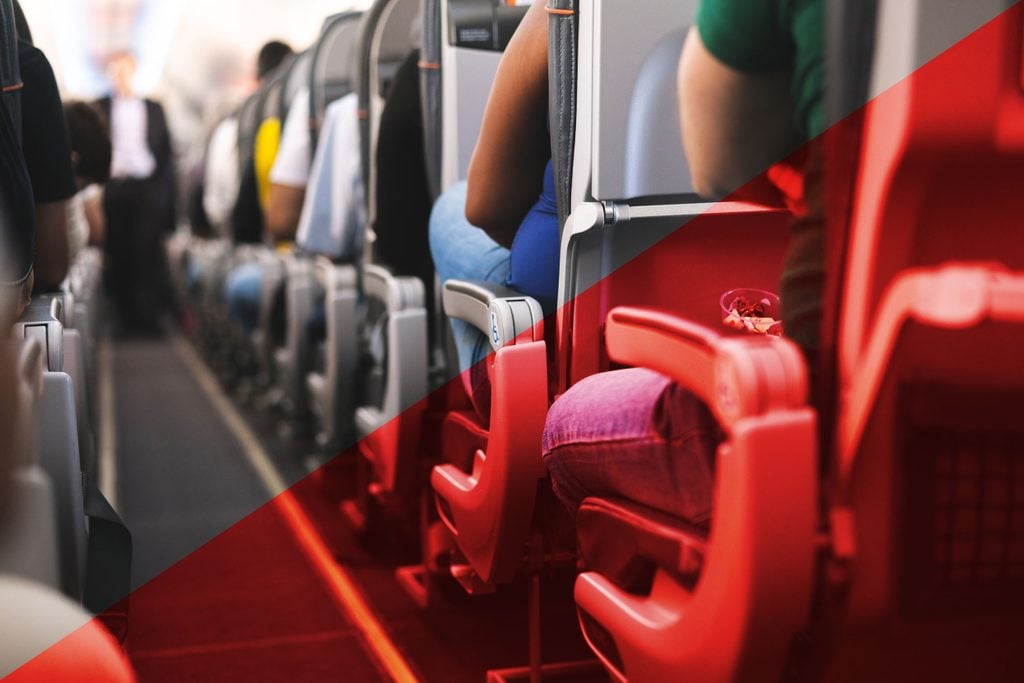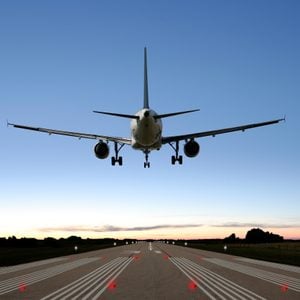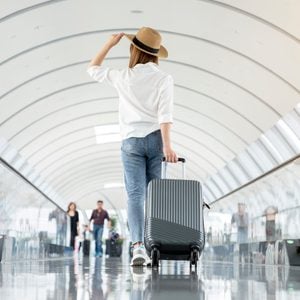7 Secrets to Avoid Flying on a Crowded Plane
Updated: Nov. 26, 2023

Avoiding the dreaded middle seat carries even more importance in this age of social distancing. Here's how to make sure you pick a flight that allows maximum social distancing between passengers for the safest travel in the skies.
At the height of the COVID-19 pandemic in April, the TSA reported a drop of 96 percent in passenger screenings. If you had to fly then, you’d have had nearly the whole plane to yourself. And during the height of the coronavirus restrictions last spring, airlines also conscientiously blocked middle seats and reduced capacity on all flights.
But as summer arrived, people started heading back to the airport: 32 percent of American consumers said they’re “definitely” planning to fly again before the end of 2020, and 40 percent of those will do so this summer, according to Value Penguin. And a new poll by Allianz Travel found that the majority of customers surveyed (59 percent) are planning domestic getaways for their next trip with 54 percent planning to fly to get there. Combine this increase in passengers with the reduction of routes and planes in the sky, and then add in that some airlines have relaxed their capacity limits, and you may find yourself on a packed plane if you need to take to the sky.
How to avoid sardine syndrome? In the midst of a pandemic, the safest option is not to fly at all. However, if you do find yourself headed to the airport, make sure you’re on a flight with the maximum amount of safe distance between passengers to stay healthy and socially distanced from fellow passengers as flights start to fill up. Wear a mask, stay flexible when you’re planning, and follow these tips for avoiding crowded flights.
Choose the best airline
Not all airlines are created equal when it comes to seat spacing. Some airlines, Delta, JetBlue, Alaska, and Southwest among them, are commendably still limiting the number of people on each flight, while other airlines—we’re looking at you United and American—are selling all the seats they can. If you have options, choose airlines that are still blocking middle seats and limiting passenger capacity, which will give you an easy leg up on social distancing.
Watch the seating chart
Once you choose your airline, take a close look at the seating chart. You’ll want to pick a seat with as much room around it as possible, ideally, with an open space next to it. If you can’t easily see the seat map for your route, check Seat Guru, which provides layouts and reviews of all seats available on flights. If you don’t have your ideal seat, set up an account with Expert Flyer’s Seat Alerts which will ping you if your desired spot—i.e, window or aisle—becomes available. If you’re not sure about where to sit, check out this guide to the best airplane seats for every type of need.
Pay for extra space
If you’ve been saving points or have extra travel budget, now is the time to use it to upgrade your position on the plane. If you can swing business class where you have an isolated pod seating, go for it, but even premium economy, extra legroom seats, or positions near the front of the plane will give you more space apart from other passengers. This is also a good time to skip the basic economy options that assign you a seat at random since you won’t be able to change your position unless a gate agent takes pity on you.
Utilize technology
With a quick click of your computer keys, you can find out every recent policy your carrier is offering by using FlySafe. The free browser extension from Pilota shows travelers what safety precautions are being taken on every flight and allows you to review them all in one place. Once you download it, you’ll be able to see detailed star ratings including mask requirements, seat blocking, and capacity capping, if there are surgical-grade HEPA filters used on the flight, if PPE is provided, info on cabin sanitization, and also if there’s are flexible policies for flight changes and cancellations. Extra bonus, the extension is completely free; according to Saniya Shah, the CEO of Pilota, “We know how stressful it is to fly right now, and we hope that FlySafe will bring some comfort and peace of mind to travelers that need to get in the air right now.”
Travel midweek
If you can be flexible on what day you fly, you’ll have a better chance of finding less crowded flights. Flights on Tuesday, Wednesday, and Saturday tend to be less crowded (and cheaper!) than flights on Mondays and Fridays, says Scott Keyes, the founder and chief flight expert of Scott’s Cheap Flights. If you want to avoid delays, this is the best time to fly.
Fly off-peak
The most popular time of day to fly is early morning and early evening; this is also when flights can be expected to be most crowded, says Keyes. When you’re choosing flights, pick a nonpeak time (these usually correspond to when flights are cheapest as well); flights in the middle of the day tend to be less crowded than morning or evening flights. Or try middle of the night flights; not only are these often less crowded, but passengers will often be sleeping, which means fewer people walking in the aisles or conversing with each other.
Use alternate airports
Finding less popular routes will also cut down on crowded flights. When you’re searching for routes on a booking site like Expedia or using an airline’s site, choose “nearby airports” as an option. Often in big markets like New York or Los Angeles, you’ll have several nearby options. Choosing a small airport like Westchester instead of JFK in New York or Orange County instead of LAX in California will automatically mean fewer people in the airport and on your flight. If you’re looking for the most reliable airport in the country, add Phoenix to your travel plans.
For more on this developing situation, see our comprehensive Coronavirus Guide.
Sources:
- Value Penguin: “32% of Americans ‘Definitely’ Plan to Fly Again in 2020”
- Saniya Shah, the CEO of Pilota
- Scott Keyes, the founder and chief flight expert of Scott’s Cheap Flights


